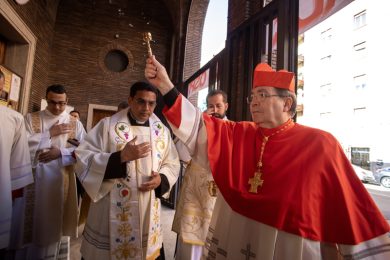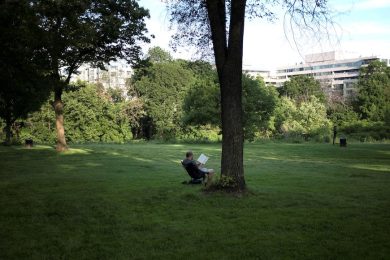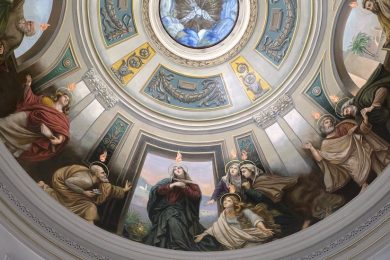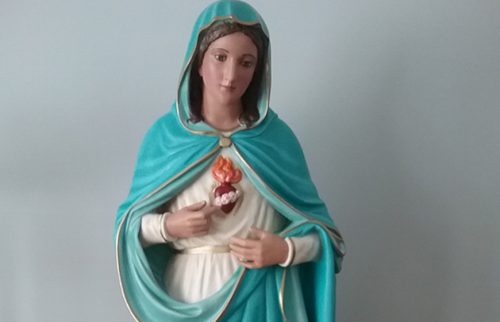WHO OF US HASN’T GROWN WEARY LISTENING TO THE NEWS SINCE MID-MARCH? If it’s not the virus being reported, it’s riots, shootings, political intrigue or a downward spiraling of morality. But have you noticed the rising of a more passive persecution directed against our faith: the destruction of religious statues? I have because it’s a bold attack on my faith and directly pertains to my work, since I restore church art. Various groups have targeted our faith and history has proven that such aggression is a step toward greater persecution.

The greatest subject depicted in art is God, followed by his mother, the angels and saints. When these images are blessed by a bishop or priest they become sacramentals, that is, sacred objects instituted by the Catholic Church as a means of receiving sanctifying grace and, as such, ought to be treated with respect. When they are damaged beyond use or repair, they are to be disposed of in respectful ways.
Religious images in the Catholic Church are sometimes mistaken for idols — magical images that one worships as if they were gods. A statue of the Blessed Mother in New York City recently had “Idol” painted across it. On the contrary, religious images are meant to inspire us to pray to God directly or to ask for a saint’s or angel’s special intercession. The Catechism of the Catholic Church (No. 2131) cites the Council of Nicaea in 787, which “justified … the veneration of images — of Christ, but also of the Mother of God, the angels, and all the saints” since “by becoming incarnate, the Son of God introduced a new ‘economy’ of images.” And again, the catechism (No. 2132) quotes St. Basil, who said that “the honor rendered to an image passes to its prototype.”
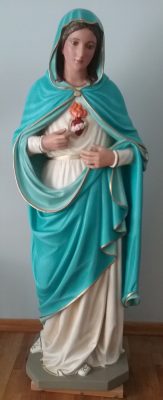
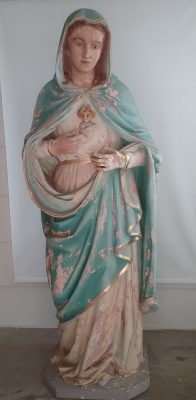
In other words, when we venerate the crucifix on Good Friday by genuflecting or kissing it, the reverence passes to Jesus himself; and when we pray the rosary before a statue of Our Lady, we are not praying to a plaster statue, but to our Blessed Mother, whom the statue represents. This is why the current desecration of religious images is offensive: It is hate directed toward the person the image represents as well as the beliefs of the faithful who venerate these images.
How should religious art be rendered? With prayerful openness to God, the author of beauty and truth. Although beauty is subjective, ordinarily, there is a strong consensus regarding what is beautiful. Truth, on the other hand, is objective. An artist who is full of self, who wishes to call attention to himself or herself, often attempts to do this by distorting beauty and truth — usually at the price of morality and nearly always with the intention of offending a certain population.
True artists don’t resort to these tactics for attention; instead they allow the Lord to use their unique talents to create a style often recognized as their own without compromising beauty and truth or offending God and others. Religious artists are at the service of God and humanity, and their aim is to restore or create art with God’s honor in mind as well as the audience’s emotions.
In July, Father Ben Kociemba informed us at daily Mass here in Little Falls that China cracked down on a law already several years old that prohibits religious images in, or outside, churches. More alarming is that all religious images in homes must be replaced with images of the Communist leaders. Government officials target poor villages, and those who do not comply lose the government assistance they are receiving.
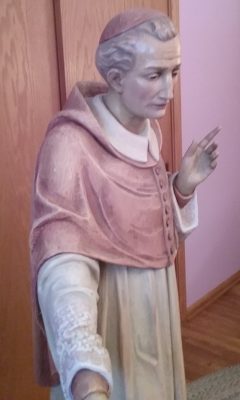
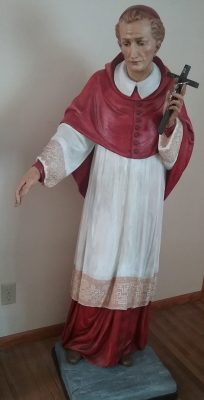 When I heard this, my heart went out to the faithful in China, and then I thought of how easily our religious freedom could be taken away from us. That’s when it dawned on me that my work, restoring and beautifying art — work that can be exacting and tedious, but always rewarding — could be offered as reparation for those who are suffering persecution and for those trying to dismantle our faith.
When I heard this, my heart went out to the faithful in China, and then I thought of how easily our religious freedom could be taken away from us. That’s when it dawned on me that my work, restoring and beautifying art — work that can be exacting and tedious, but always rewarding — could be offered as reparation for those who are suffering persecution and for those trying to dismantle our faith.
So, go ahead and place religious images in your homes or yards to inspire your faith and love for God. Be ready to give a defense for what you believe (1 Peter 3:15), and the Lord whom you acknowledged before men here on earth will acknowledge you before his heavenly Father (Matthew 10:32).
/////////////////
SHEILA MCCALLUM lives in Little Falls and attends Our Lady of Lourdes. To see her restored and original art, visit www.dovecot. us. She can be contacted at sheila@dovecot.us




